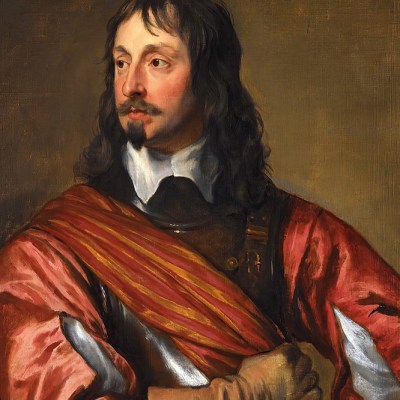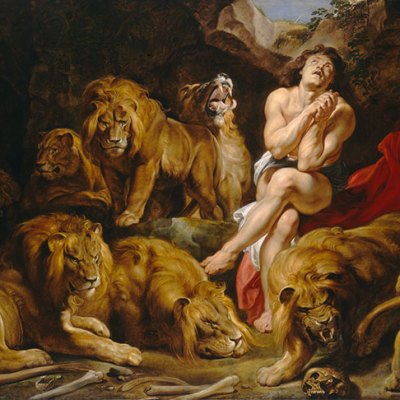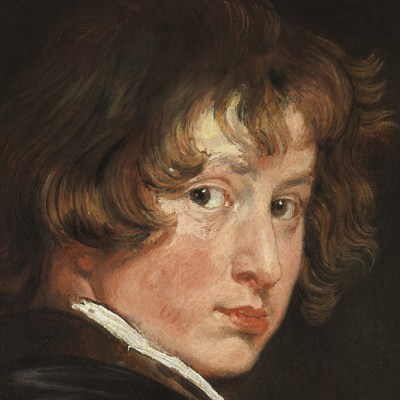From the June 2022 issue of Apollo. Preview and subscribe here.
Amid the buzz of artistic activity in 17th-century Flanders, there is one towering figure: Peter Paul Rubens (1577–1640). Creating a vigorous synthesis of Northern European mannerism with Venetian colour and Roman dynamism he became not only the leading figure of the Flemish baroque, but also the head of a vast art industry.
Rubens established his studio after returning home to Antwerp in 1608, after several years in Italy. The studio grew to more than 200 employees, serving his creative and commercial interests as painter and printmaker. Drawing was fundamental – for Rubens to sketch out initial ideas, provide preparatory drawings for individual figures in large compositions and communicate his thoughts to assistants and pupils. Oil sketches were more usually presented to patrons, but Rubens would also make more finished drawn portraits of friends, family or patrons, or more formal copies after the antique.
It is thought about 700 sheets have survived. These have been admired and collected since they were first produced, and many are now in museum collections. When good ones appear, they fetch enormous prices. In January 2019, at Sotheby’s New York, a monumental figure study for one of the key figures in the great altarpiece The Raising of the Cross, which Rubens painted for the Antwerp church of St Walburga not long after his return from Italy, achieved a record $8.2m, more than twice the top estimate ($2.5m–$3.5m). That price is, according to Gregory Rubinstein, head of Old Master & Early British Drawings, Sotheby’s Worldwide, ‘knocking at the all time top ten prices for Old Master Drawings’. Another outstanding price was the £3.2m achieved in July 2014, at the Christie’s London sale of the renowned I.Q. Van Regteren Altena Collection, by a lucid drawing of Samson and Delilah (est. £1.5m–£2.5m), preparatory to the painting of 1608 in the National Gallery in London.
Nude Study of a Young Man with Raised Arms (c. 1610), Peter Paul Rubens. Sotheby’s New York, $8.2m

Even some less spectacular sheets perform well. Last July, a double-sided sheet depicting a decapitated soldier and a female satyr with statue of Pan, a survival from Rubens’ subsequently destroyed travelling sketchbook of 1600–08, sold for £523,200 (est. £400,000–£600,000) at Sotheby’s London. And in October 2021 at Christie’s New York, an écorché study of the legs of a male nude (once in the collection of the Rubens scholar Ludwig Burchard) sold for $930,000, well above its $200,000–$300,000 estimate. Rubinstein says, ‘We have a small but determined group of collectors from the Far East focused on Old Master Drawings, but 80 per cent of the market is in Europe or North America.’
Rubens’ most gifted protégé was Anthony van Dyck (1599–1641). Some black chalk drawings of Rubens’ paintings from before 1620 are attributed to Van Dyck, but he quickly established his own style, influenced above all by Titian and artists of the Bolognese school. As well as compositional sketches and detailed studies for paintings and portraits, once Van Dyck had moved to Britain, in 1632, he produced landscape studies, some using wash and watercolour in ways that would influence later British artists. Always highly prized, only 200 of these drawings are thought to survive. Great examples come rarely to market: the record is still held by the Portrait of Hendrick van Balen sold from Chatsworth and bought by the Getty at Christie’s London for £540,000 in 1984. Dormant demand was rekindled in December 2019 when Christie’s Online presented a double-sided sheet of pen sketches with the Holy Family from the late 1620s; the modest £4,000–£6,000 estimate was chased to a staggering £212,500.
If Rubens’ studio monopolised artistic talent in Antwerp, it also encouraged it. Among his collaborators were the specialist animal painters Frans Snyders (1579–1657) and Paul de Vos (early 1590s–1678), and Jacob Jordaens (1593–1678), best known for genre paintings. Jordaens’ drawings, also rare, can fetch high prices – the record is a study of a man seen from behind, sold at Christie’s New York in January 2011 for $290,500 (est. $50,000–$80,000). In the 2014 I.Q. Van Regteren Altena Collection sale, his characterful sketch for the painting As the Old Sang, So the Young Pipe (c. 1638–40), in Antwerp’s Royal Museum of Fine Arts, sold for £104,500, (est. £70,000–£100,000). The same sale saw a confident pen and wash study by Snyders of a table groaning with fish, game and fruit achieve £98,500, above the high estimate of £80,000. Another frequent collaborator was Jan Breughel the Younger (1601–78), whose shimmering, detailed Panoramic landscape with Travellers and Wagons on a Road, its blue gouache harking back to the Flemish Primitives, fetched $201,600 at Sotheby’s New York in January 2021 (est. $70,000–$90,000). Rubinstein says that rather than focusing on school, category, artist or genre, collectors of Old Master drawings look for sheer quality: ‘The top prices we have made in the last few years have been striking images.’
The Holy Family with the Infant Saint John Baptist Adored by a Saint or Patron (recto), (late 1620s), Anthony van Dyck. Christie’s Online, £212,500

For lesser artists at the time, the challenge was to develop a style distinct from the master; the challenge for scholars now is to tell them apart. Many sheets ascribed to Rubens in the 19th century have later been reattributed, often under the aegis of the Antwerp-based Rubenianum. Reattribution can go the other way, from Van Dyck to Rubens, but overall Rubens’ oeuvre has shrunk. So far, suggests Stijn Alsteens, Christie’s international head of Old Master Drawings, scholarship has not caught up sufficiently for collectors to feel confident in attributions to unknown figures. ‘These artists are less well understood and so less well collected,’ he says, especially in comparison with contemporary Dutch painters or the Flemish painters of the generation before. Collectors can be drawn to their work, though. Alsteens cites the carefully modelled study of the Apollo Belvedere (c. 1633–41) by Peter van Lint (1609–90) that sold at Christie’s Paris in May 2020 for an unexpected €112,500 (est. €20,000–€30,000). Another example is the curious album created in 1653 by Joannes Meyssens (1612–70) and Erasmus II Quellinus (1607–78) of 55 drawings – one title page and 54 portraits – prepared for a printed publication illustrating the princes of Brabant. This sold at Christie’s Paris in May 2018 for €131,250 (est. €30,000–€50,000). Stijn reports that while both these examples sold to a dedicated buyer of Flemish drawings, the two underbidders had no such special focus.
Stephen Ongpin, meanwhile, has a drawing available by Lucas Franchoys the Younger (1616–81), another gifted student of Rubens. A Half-Length Study of a Male Nude Holding a Staff was once attributed to the 17th-century Neapolitan painter Giovanni Battista Beinaschi: ‘Only a handful of drawings by Franchoys are known, some of which are drawn in black (sometimes oiled) chalk and white chalk on blue paper. The influence of the draughtsmanship of both Rubens and Van Dyck is evident.’ Among artists directly linked to the Rubens’ workshop, Emanuel von Baeyer, a London-based specialist dealer in drawings, particularly admires Cornelis Schut (1597–1655). He fears that the baroque school of Flemish draughtsman is unfairly overshadowed by the contemporary Italian and French schools. ‘Schut is an absolutely underrated printmaker and draughtsman. There are still names to be discovered in this field.’
From the June 2022 issue of Apollo. Preview and subscribe here.



